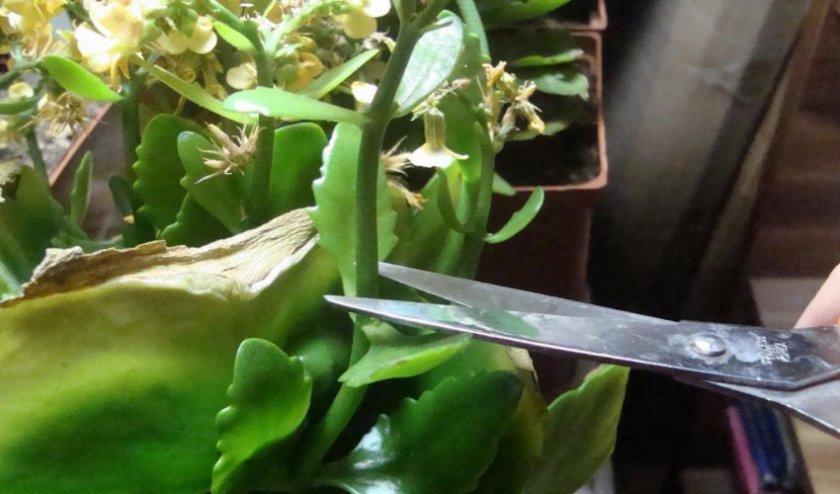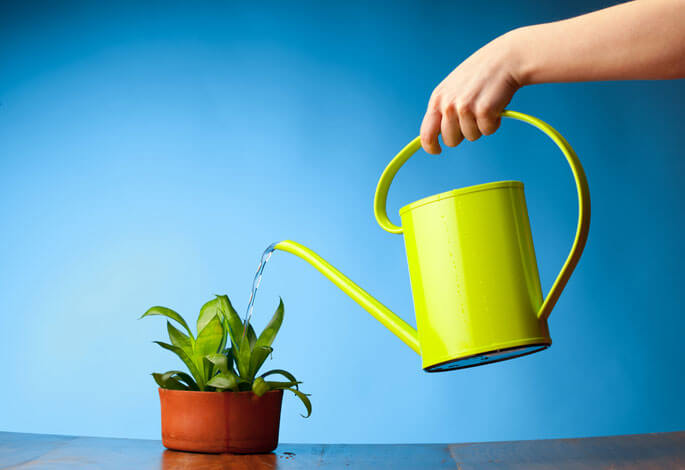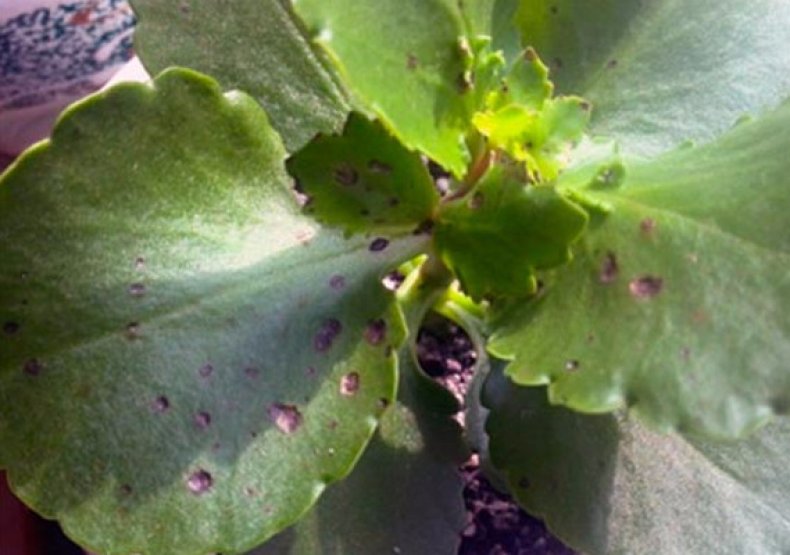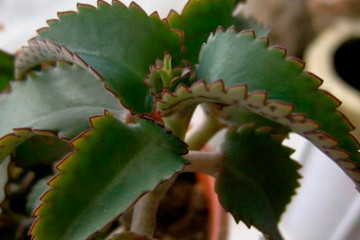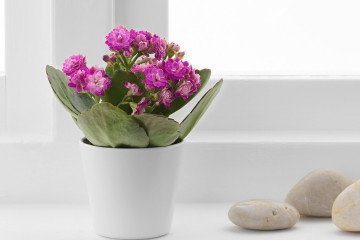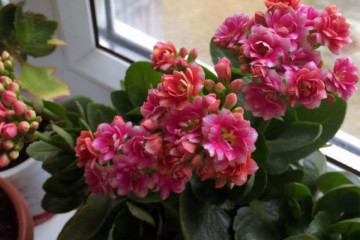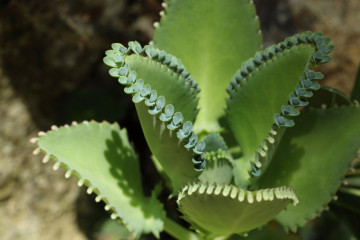How to trim the Kalanchoe correctly
Content:
Kalanchoe is a wonderful plant that has pronounced medicinal properties. It is used for inflammatory processes, skin pathologies, rhinitis. Also, the culture has excellent decorative properties. It is characterized by beautiful flowers. With proper care, the bush can become a real decoration of the room. In this case, you need to know how to cut the Kalanchoe.
Why and when you can prune a plant
Pruning Kalanchoe is to remove excess leaves and peduncles. This procedure helps to give the flower a beautiful rounded shape. If you form a culture in the form of a small bush, it will look more original than an elongated thin stem and chaotic elongated branches.
In addition to solving decorative problems, pruning at home is required to create the most favorable conditions for the plant. Thanks to the procedure, the juice that accumulates inside the flower culture is evenly distributed over the processes and nourishes the foliage. As a result, the plant becomes more succulent and resistant to drying out and wilting.
Bush pruning has several varieties:
- initial;
- preventive;
- after flowering is complete.
It is best to use a utility blade for trimming. You can also use a sharp knife.
First and preventive pruning
For the first time, the bush should be trimmed in the spring. The procedure should be carried out one month after the flower wakes up. To do this, you need to remove young shoots with leaves. At first, it is recommended to cut 2-3 leaves on each branch.
After the procedure, it is forbidden to place the culture on the southern or southeastern windowsill. It should not be exposed to the bright rays of the sun. In such a place, the Kalanchoe will begin to grow rapidly, and therefore the shoots will stretch out. As a result, the bush will quickly lose its shape.
The preventive procedure should be carried out as the flower develops. It is performed for various reasons. In areas where shoots and leaves are removed from the buds, fresh shoots appear after a while. 2-3 leaves are cut from them. This process can last until autumn, until the crown of the desired shape is obtained.
To prevent stem rot and other diseases, all affected leaves and broken branches must be removed from the plant. As it develops, the old leaves fall off, which leads to the bare base of the bush. This negatively affects its appearance and prevents the development of young shoots. Therefore, old fragments of culture should be gradually removed, which contributes to the rejuvenation of the culture.
In summer, the upper part will actively grow to the top, which will lead to a violation of the shape of the plant. To activate the plant of young shoots on the sides, you need to pinch it.
How to properly trim Kalanchoe at home, step by step instructions
Many people are interested in how the Kalanchoe can be cut if it is stretched out. In fact, this is a fairly simple procedure. Nevertheless, when carrying out it, you need to follow simple recommendations:
- an exceptionally sharp knife or scissors should be used for trimming - this will help to avoid strong tissue tears;
- before manipulation, the instruments should be disinfected - this will avoid infection of the flower;
- hands should be thoroughly washed with soap before trimming the culture;
- it is best to prune the plant in the morning;
- the sections should be sprinkled with crushed activated carbon - this contributes to faster drying of the wound;
- after pruning, the crop must be removed from the sunny windowsill - it needs a little partial shade.
If the plant has a weak and unattractive top, it is recommended to remove it. For the plant to develop into a lush bush, you need to carefully evaluate the structure of the shoots.
How to prune Kalanchoe? The step-by-step instruction looks like this:
- Remove the 2 top leaves from the plant as soon as they begin to develop.
- When 2 shoots appear in the pinched area, they need to be allowed to grow until another pair of leaves is formed. They should be trimmed at this level.
- Wait for 2 more shoots and a third pair of leaves to appear. At this stage, carry out the procedure again.
- If the bush has not acquired an attractive shape, the procedure must be continued until the desired results are obtained.
- For the last time, the Kalanchoe is recommended to be trimmed again at the end of autumn - this should be done in November.

During the procedure, excess leaves must be removed from the plant in order to stimulate the development of lateral shoots.
How to pinch a Kalanchoe, what are the subtleties
Many people are interested in how to pinch a Kalanchoe. If you constantly monitor the condition of the flower and avoid overgrowth, there will be no need for significant pruning. When ugly shoots appear above the crown of the bush, they should be pinched off. The procedure consists in removing the two upper leaves.
At the same time, it is necessary to carefully monitor the state of the shoots and prevent their rapid development. This makes the subsequent pruning less painful. However, crown formation is still required.
In addition, timely pinching will help make the mature plant denser. It will become more branched and more rounded. Also, the procedure will help the rooted cuttings bloom. To do this, it is recommended to periodically cut off the shoots of the young culture over the fourth leaf.
For the first time, it is recommended to pinch the bush immediately after purchase. This will ensure proper growth of the flower and create the base of a lush crown. In this case, it is necessary to remove 2-3 top leaves from each branch. This will help to achieve the development of young shoots. It is not recommended to pinch the bush during the flowering period.
Pruning a flower after flowering, whether it is necessary to do it
After the end of the flowering period, the bush must be cut off. The procedure is performed immediately after the buds wither. In the process of carrying out it, it is necessary to get rid of dry peduncles. You should also remove 2 leaves on each branch.
Pruning Kalanchoe for lush flowering in subsequent seasons means doing the following:
- removal of all peduncles;
- trimming flowers near the base;
- treatment of damaged areas with activated carbon.
Thanks to pruning after flowering, it is possible to activate the formation of young shoots, on which flowers will subsequently appear. After trimming the peduncles, the resting phase begins at the bush. At the same time, it is recommended to reduce the number of waterings and move the bush to a darker place. Rest should take 25-45 days.
How to properly form the crown of the Kalanchoe
How to form a Kalanchoe correctly? This question is of interest to many flower growers. In principle, this process resembles pruning. It is recommended to shape the plant immediately after preventive pruning, when the bush has a sufficient amount of greenery.
Thanks to the formation of the crown, it is possible to avoid too strong growth of shoots. To do this, you need to pinch off the tops of the plant. The procedure should be carried out with clean hands. This must be done with the thumb and forefinger, between which the tip of the shoot is clamped.
The apical leaves should be very small. Thanks to this, the damaged area will be able to recover faster. In this way, it is possible to form a crown with a minimum of pruning to reduce the likelihood of damage to the Kalanchoe.

In the process of growing Kalanchoe, it is imperative to pay attention to the formation of its crown.
Plant care after pruning and pinching
If Kalanchoe is grown, how to care for and prune for this crop to bloom? This question is of interest to many flower growers. Pruning leads to damage to the bush. To speed up its recovery, you need to adhere to simple recommendations:
- Water the plant correctly. The procedure is performed after the top layer of the soil has dried. In the warm season, it is necessary to moisten the soil at intervals of 3-4 days, in the cold - a maximum of once a week. Kalanchoe can hardly tolerate excess moisture. The plant can accumulate a sufficient amount of liquid in the leaves and spend it little by little.
- Use soft water for watering. The liquid should be at room temperature.
- When watering, water can be poured under the root or into a tray under the pot. Thanks to this, the root system of the flower will be able to receive the required volume of liquid.
- After a few hours, the excess water from the sump must be drained. This avoids the development of putrefactive processes in the roots.
- The optimal period for fertilization is considered to be the flowering of the crop. This helps to extend the life of the inflorescences and form new buds. At the same time, it is recommended to feed the culture once a month until the end of the lush flowering. Excessive amounts of nutrients can cause accelerated growth of green mass and deformation of the shoots. This negatively affects the decorative characteristics of the flower.
- Every year at the end of March, the Kalanchoe should be moved to a new pot. It should be several centimeters larger than the previous one in diameter. When carrying out a transplant, the bush must be pulled out with a lump of soil. This avoids root damage.
To transplant a culture, a new pot needs to be filled with a drainage layer a quarter. For this, it is permissible to use pebbles or expanded clay. Then pour the soil and place a plant with a lump of earth in a container.
What problems can arise
In general, the plant tolerates pruning normally and easily recovers. Sometimes it suffers from infections and parasites. Also, the flower may become more demanding in terms of care and maintenance conditions.
The most common problem of Kalanchoe is late blight.With the development of pathology, brown spots and plaque appear on the leaves. Infection can be due to excess moisture in the soil or stagnant air in the room.
To cope with the problem, it is necessary to cut off the damaged fragments of the bush and spray the plant with Fitosporin solution. At the same time, it is necessary to reduce the number of waterings and ventilate the room more often.
With rare ventilation of the room in hot weather or during the heating season, the likelihood of developing powdery mildew increases. In this case, the leaves of the culture are covered with a white bloom. To cope with the problem, the culture must be treated with Fundazole.
If the plant is kept in a very cold place, there is a risk of darkening and rotting of the lower part of the stem. Treatment with Diskor and maintaining optimal temperature conditions will help to cope with the problem.
Also, the bush can suffer from parasites - primarily from the spider mite. Pests settle at the bottom of the leaves, which leads to their twisting, yellowing and falling off. Fitoverm will help to eliminate ticks.
Another parasite that harms the Kalanchoe is the mealybug. In this case, the leaves are covered with white waxy stains. It is recommended to collect the parasites by hand, then treat the bush with soapy water and Aktara.
Pruning Kalanchoe helps to improve the decorative properties and increase the defenses of the culture. To achieve good results when carrying out this procedure, you need to choose the right period and strictly follow the recommendations of experienced florists.

